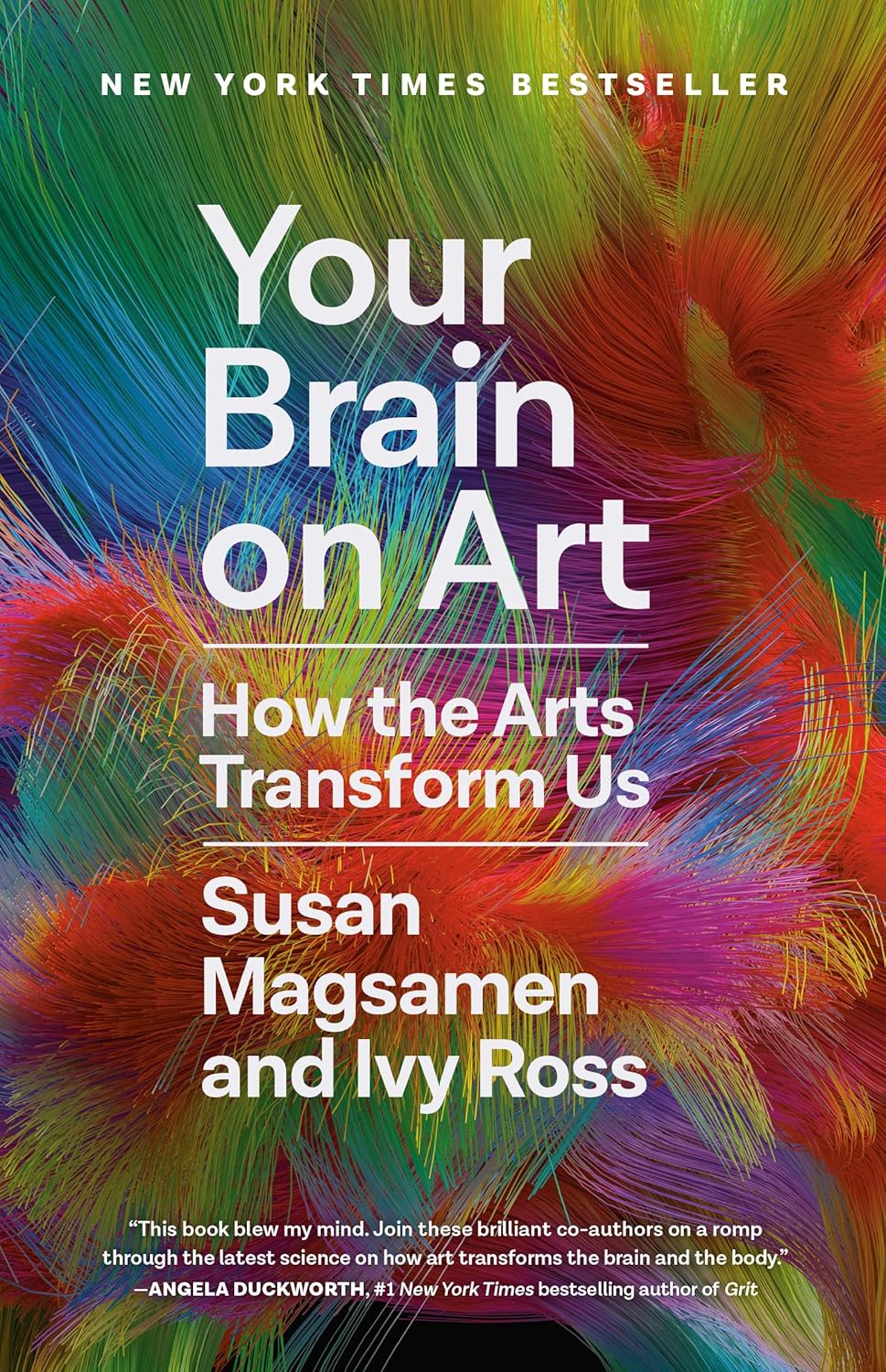
Your Brain on Art: How the Arts Transform Us
Art isn’t just something we admire in galleries or hear in concert halls—it’s deeply wired into who we are as humans. Your Brain on Art: How the Arts Transform Us by Susan Magsamen and Ivy Ross isn’t just another book about creativity; it’s a deep dive into what happens to our brains when we engage with art. The authors blend neuroscience, psychology, and real-world examples to show that art isn’t a luxury but a biological necessity, shaping how we think, feel, and even heal. It turns out that the arts—whether painting, music, literature, dance, or theater—do more than just entertain us. They literally rewire our brains, enhancing cognitive function, reducing stress, and making us more empathetic and emotionally resilient.
One of the book’s most striking revelations is that engaging with art activates multiple areas of the brain at once. When you listen to music, for example, different neural networks synchronize, improving memory, mood, and even problem-solving skills. Studies have shown that music therapy can help people with Alzheimer’s recall lost memories, while rhythmic movement in dance strengthens neural pathways that improve motor function. Literature, on the other hand, boosts empathy by simulating real-life social interactions in our minds, helping us understand perspectives outside our own. Even visual art engages the brain in unique ways—simply looking at a painting can increase dopamine levels, the chemical associated with pleasure and motivation, while creating art strengthens cognitive flexibility and emotional regulation. What’s fascinating is that the benefits of art aren’t limited to those who are “good” at it. The process of making art, regardless of skill level, has been shown to lower cortisol (the stress hormone) and increase neuroplasticity, meaning the brain becomes more adaptable and resilient. This is why activities like doodling, playing an instrument, or even just singing in the shower can have measurable effects on mental and emotional well-being.
The book also makes a compelling case for using art as a healing tool. Expressing emotions through painting, writing, or movement has been used in therapy to help people process trauma, recover from depression, and manage anxiety. Art therapy is now widely used to support patients with PTSD, offering a non-verbal way to process deep emotional wounds. Even outside of clinical settings, incorporating art into daily life can have profound effects. Reading fiction strengthens our ability to connect with others on an emotional level, listening to music can enhance focus and relaxation, and dancing—even if it’s just swaying in your living room—stimulates brain regions associated with memory and emotion.
What makes Your Brain on Art so engaging is that it’s not just an academic exploration; it’s a call to action. It challenges the modern obsession with productivity, arguing that we need to stop seeing art as an indulgence and start recognizing it as an essential part of our mental and physical health. We’ve been painting on cave walls, telling stories, and singing around fires for thousands of years, not because it was a luxury, but because it was essential to our survival. This book reminds us that creativity isn’t reserved for the talented—it’s something every brain craves. If you’ve ever hesitated to pick up a paintbrush, dance in your kitchen, or write something just for the joy of it, Your Brain on Art makes it clear: your brain is built for this. Engaging with the arts isn’t just about self-expression—it’s a way to think better, feel deeper, and connect more fully with the world around you.